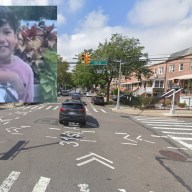By Sarina Trangle
A three-avenue strip of South Jamaica is among 30 Census tracts in the city that are collectively home to about 2 percent of the city’s population, but 10 percent of families entering homeless shelters, a recent study found.
The Independent Budget Office released an analysis last week highlighting where families entering the shelter system between fiscal years 2002 and 2012 came from and why they were deemed eligible for assistance.
The report tackled a period when the number of families deemed homeless spiked from 6,400 in 2002 to 12,000 in 2010, before declining to about 8,500 in 2012.
The surge was most profound during the so-called Great Recession in 2010, but the IBO noted policy factors, such as the discontinuation of housing subsidies under former Mayor Michael Bloomberg also played a role.
The IBO said the portion of families entering shelters due to overcrowding — meaning unrelated adults did not have their own beds or couches or children of different genders shared rooms — fell from 38 percent to 11 percent. During that period the percentage of families deemed eligible for housing because of eviction jumped from 17 percent to 36 percent, while domestic violence caused a jump from 8 percent to 27 percent.
The city is legally required to house all homeless families and single adults, but it requires families to prove they have no other housing options available. The IBO relied on intake data from the city Department of Homeless Services, despite noting some experts dispute its validity.
The study examined the 30 U.S. Census tracts that produced the most homeless families, noting that 25 of these were in the Bronx, two were in Manhattan, two were in Brooklyn and one was in Queens.
South Jamaica’s tract 254, which stretches from South Road down to 109th and 108th avenues and from Merrick Boulevard to Sutphin Boulevard, came in 17th on the list of tracts with the most families entering the shelter system.
City Councilman I. Daneek Miller (D-St. Albans), who represents that area, declined to comment.
Patrick Markee, deputy executive director for advocacy at the Coalition for the Homeless, said neighborhoods with significant poverty rates and housing problems, such as families spending more than half their income on rent or overcrowding, tend to produce more homeless families.
During the 11 years studied, about 39 percent of families moving into shelters had home addresses in the Bronx, 34 percent in Brooklyn, 13 percent in Manhattan, 12 percent in Queens and 2 percent in Staten Island.
Still, a prior report by the Institute for Children, Poverty and Homelessness, a New York City-based homelessness policy research group, found that Queens had fewer shelter units than all boroughs but Staten Island.
The institute noted that Miller’s district included two shelters, putting it 21st out of the 51 Council districts with the most shelter units.
The borough has fought the shelters in Elmhurst and East Elmhurst and proposed ones in Glendale and Bayside, often arguing that the areas are too residential and isolated from public transportation.
Markee said most facilities are located in residential communities and that access to permanent housing resources appears to be a larger predictor of success than shelter location.
Reach reporter Sarina Trangle by e-mail at strangle@cnglocal.com or by phone at (718) 260–4546.

































